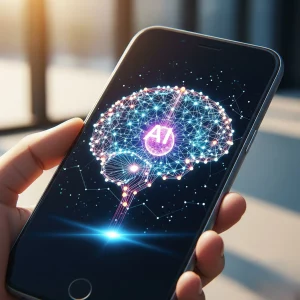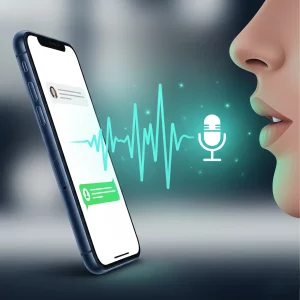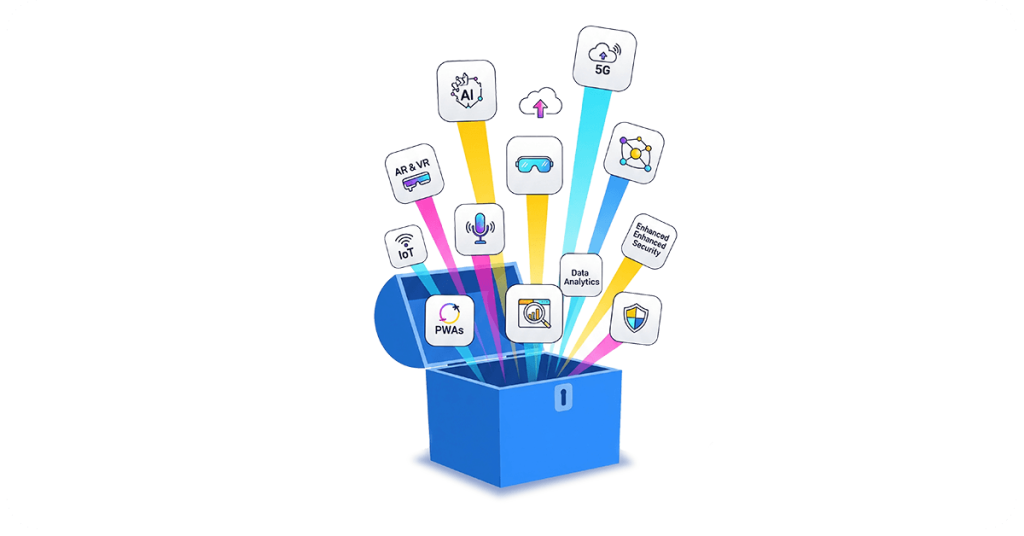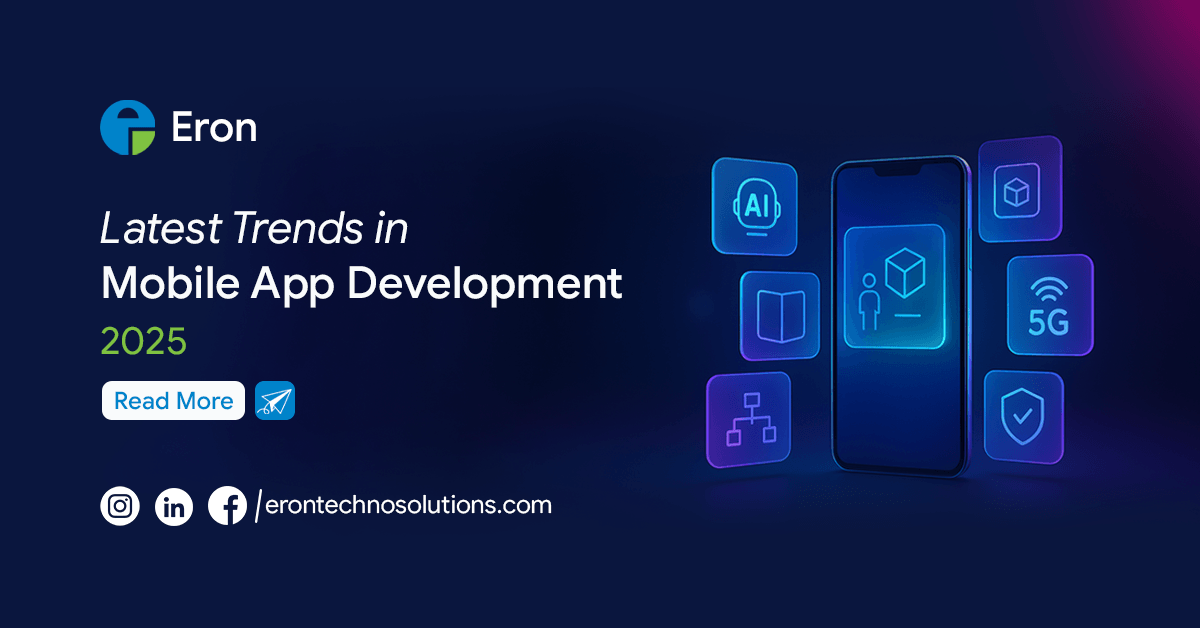Latest Trends in Mobile Application Development 2025
Mobile application development is not just growing — it’s transforming. In 2025, we are witnessing a rapid evolution in the way apps are built, deployed, and experienced. With AI integration, cross-platform technologies, cloud-based architectures, and emerging interfaces like AR, VR, and voice, the app landscape is becoming smarter, faster, and more user-centric.
If you’re a developer, business owner, or tech enthusiast, staying ahead of these trends is crucial to remaining competitive. Let’s explore the biggest mobile app development trends shaping 2025.
1. Artificial Intelligence (AI) at the Core of Mobile Apps

Artificial Intelligence has moved from being an optional feature to becoming the foundation of modern apps. In 2025, AI is enabling apps to learn from user behavior, make intelligent predictions, and deliver personalized content in real-time.
- AI Chatbots & Virtual Assistants – Offering instant support, 24/7.
- Recommendation Engines – Powering eCommerce, streaming platforms, and news apps.
- Predictive Analytics – Anticipating what users need before they ask.
- AI-powered Image & Voice Recognition – Boosting accessibility and security.
Example: Duolingo uses AI to personalize lessons based on a learner’s progress, improving engagement and retention.
2. Cross-Platform Development for Speed & Efficiency
In the past, developers had to create separate codebases for iOS and Android. In 2025, frameworks like Flutter, React Native, and Xamarin make it possible to develop high-quality apps for multiple platforms with a single codebase.
- Reduced development time – Faster go-to-market.
- Lower costs – One codebase to maintain instead of two.
- Uniform UX/UI – Consistent experience across devices.
Future Outlook: With better native integrations and improved performance, cross-platform development will become the default choice for most businesses.
3. Cloud-Based Mobile Apps for Scalability
The shift toward cloud integration has been a game-changer for mobile apps. In 2025, cloud-based apps allow businesses to store, process, and sync data instantly without heavy reliance on local device storage.
- Seamless data sync – Same experience across devices.
- Scalability – Apps can handle large user bases effortlessly.
- Reduced device dependency – Lightweight apps with high performance.
Example: Canva’s design platform uses cloud tech to save projects instantly, allowing users to work from any device.
4. 5G-Enabled App Experiences
The rollout of 5G technology is opening new possibilities for mobile apps in 2025. With lightning-fast speeds and ultra-low latency, 5G is enabling real-time gaming, instant video streaming, and AR/VR without lag.
- Cloud gaming platforms with zero buffering.
- High-quality video calls with minimal bandwidth issues.
- More immersive AR/VR apps for retail, healthcare, and education.
5. AR (Augmented Reality) and VR (Virtual Reality) in Mainstream Apps
AR and VR are no longer confined to gaming — they’re transforming industries like shopping, education, and real estate.
- Retail: Virtual product try-ons before purchase.
- Real Estate: Virtual property tours.
- Healthcare: Medical training simulations.
Example: IKEA Place uses AR to let customers visualize how furniture fits in their space before buying.
6. Voice Technology & Conversational Interfaces

Voice commands are changing how users interact with mobile apps. In 2025, voice-activated apps are growing in popularity thanks to their convenience and accessibility.
- Voice-based search in eCommerce apps.
- Hands-free navigation in travel apps.
- Integration with Alexa, Google Assistant, and Siri.
Example: Spotify’s voice search lets users play songs without touching the screen.
7. Enhanced Security & Privacy Features
As apps collect more personal and financial data, cybersecurity is a top priority. Developers in 2025 are implementing advanced protection features.
- Biometric authentication – Fingerprint, facial recognition, voice ID.
- End-to-end encryption – Especially in finance and messaging apps.
- AI-powered threat detection – Real-time security monitoring.
8. Internet of Things (IoT) App Integration
IoT-connected devices are everywhere — from smart homes to wearable health trackers. Mobile apps are becoming the central control hubs for these devices.
- Smart home apps controlling lights, thermostats, and appliances.
- Wearable health tracking synced to fitness apps.
- Industrial IoT apps monitoring equipment performance.
9. Progressive Web Apps (PWAs) Gaining Ground
PWAs combine the reach of the web with the performance of native apps. In 2025, businesses are increasingly adopting PWAs to offer fast, lightweight, and offline-capable experiences.
- No app store downloads needed.
- Instant updates.
- Lower development costs.
10. Hyper-Personalization Through Data Analytics
With AI and big data, apps can now deliver unique experiences for each user. Personalization drives retention and boosts engagement.
- Shopping apps showing relevant deals based on browsing history.
- Fitness apps adapting workout plans to user progress.
- News apps curating content based on reading habits.
Conclusion
Mobile application development in 2025 is intelligent, connected, and user-focused. Developers who adopt AI, cloud, cross-platform frameworks, and emerging technologies like AR, VR, IoT, and voice will create apps that are not just functional but transformative.

The competition is fierce, but the opportunities are limitless. The businesses that adapt to these trends today will define the mobile app landscape of tomorrow.


